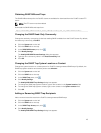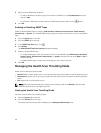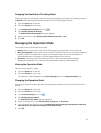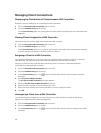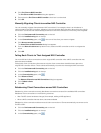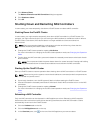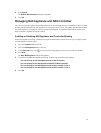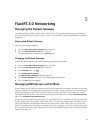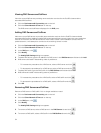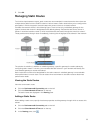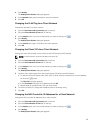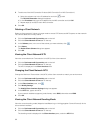
5
FluidFS 3.0 Networking
Managing the Default Gateway
The default gateway enables client access across subnets. Only one default gateway can be defined. If
client access does not go through a router (i.e. this is a flat network), a default gateway does not need to
be defined.
Viewing the Default Gateway
View the current default gateway.
1. Click the Performance & Connectivity tab on the left.
2. Click the Client Network & Time tab on the top.
The default gateway is displayed in the Routing pane.
Changing the Default Gateway
Change the default gateway if the default gateway changes for the network.
1. Click the Performance & Connectivity tab on the left.
2. Click the Client Network & Time tab on the top.
3. In the Routing pane, click .
4. Click Modify Default Gateway.
The Modify Default Gateway dialog box appears.
5. In the Default Gateway field, type a new default gateway IP address.
6. Click The OK dialog box appears.
Managing DNS Servers and Suffixes
Domain Name Service (DNS) is a networking service that enables users to locate computers by providing
name‐to‐IP address and IP address‐to‐name resolution services. You can configure one or more external
DNS servers (external to the FluidFS cluster but within the site) to be used for name resolution. A DNS
suffix specifies a DNS domain name without the host part of the name (for example, west.example.com
rather than computer1.west.example.com).
If clients access the FluidFS cluster by name, you must add an entry in the DNS server that associates the
FluidFS cluster name to the FluidFS cluster client VIPs. If you are using multiple client VIPs, add all client
VIPs to the DNS server and associate them with the same FluidFS cluster name (known as round‐robin
DNS). This enables client load balancing between client VIPs. In addition, you must configure DNS if you
are using Active Directory, and the DNS servers must be the same DNS servers that your Active Directory
domain controllers use.
53



